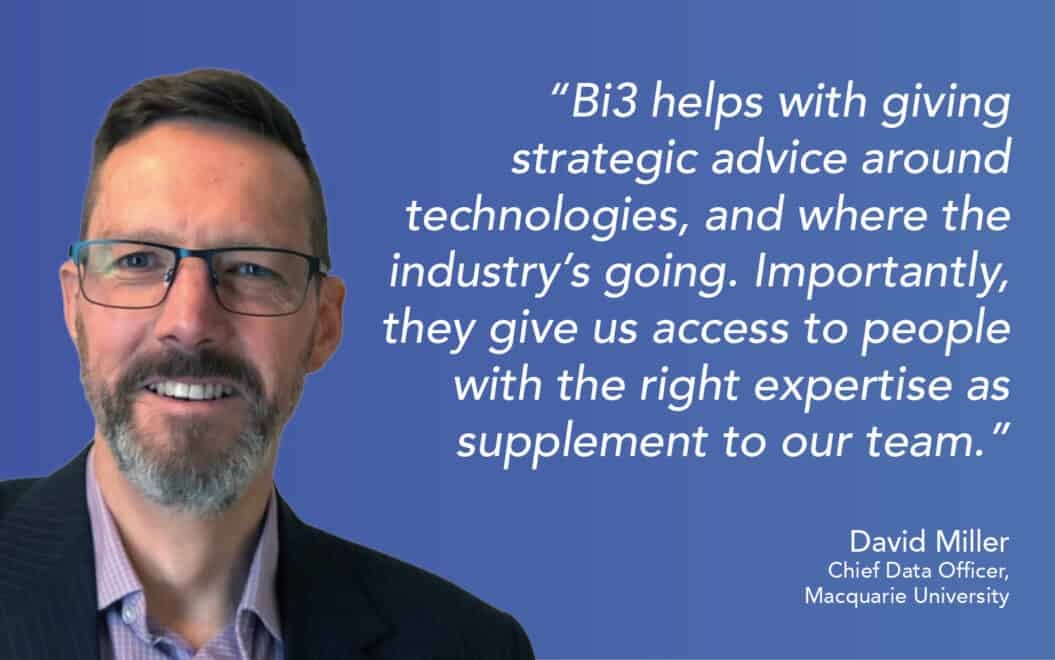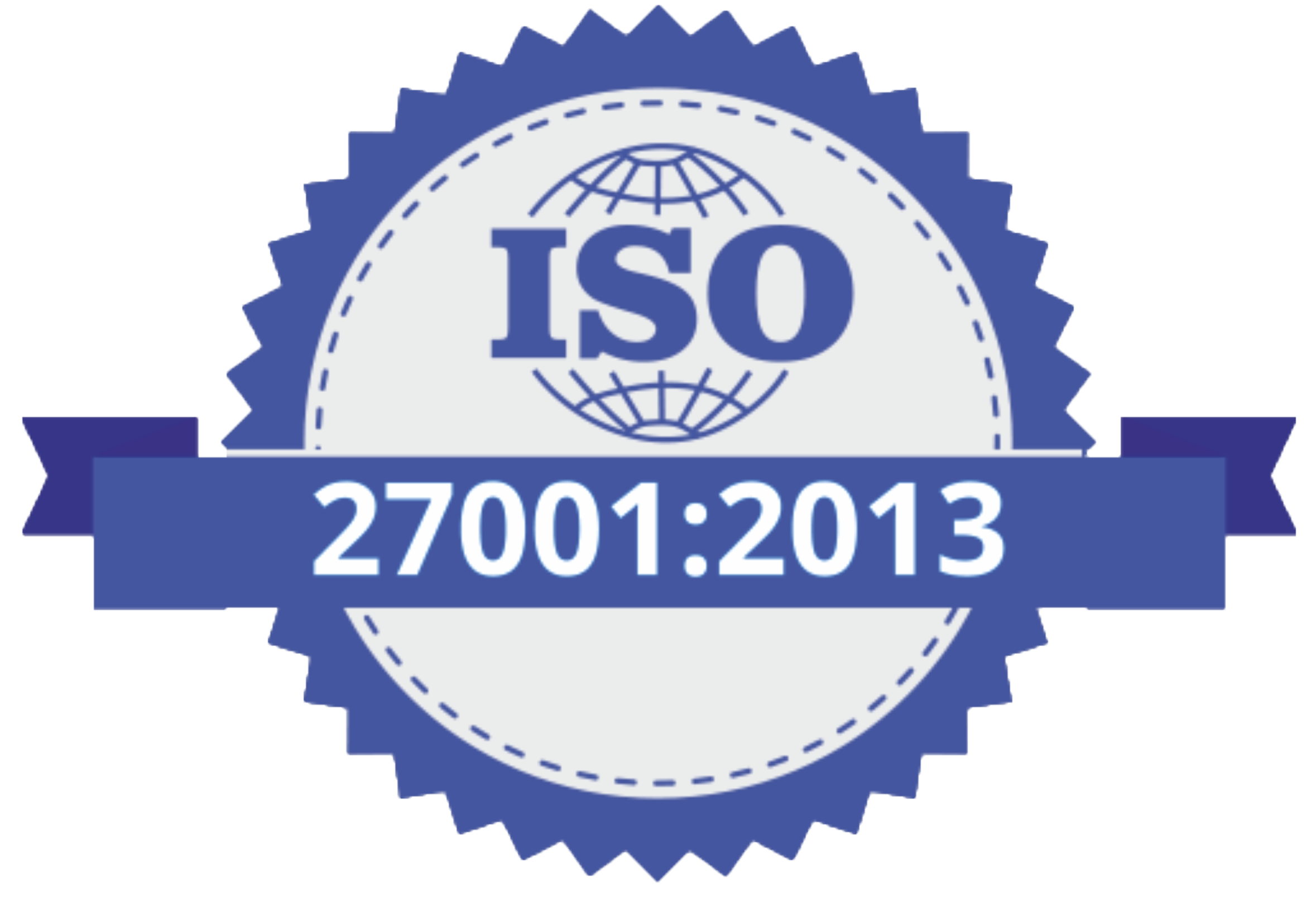From looking after mine workers in South Africa, to becoming a CDO at a prestigious Australian University, David Miller has gone through quite a transformation. He has worked in five industries, all with unique challenges.
But people are why it matters to him. Beginning after university, Miller’s first job was at Gold Fields of South Africa, overseeing a team that managed access control systems. One device they built had the ability of track testing for heat tolerance for miners. “When you work in a deep mine, it’s very hot and you can succumb to heat exhaustion. So, we built these tests that they’d have to undergo before going underground.”
And one event showed him that real people are involved behind such technologies, and that sometimes it’s life or death. “I got a call from a mine manager who said that one of his miners died and my system let him underground. That was a very confronting conversation to have when you’re in your twenties,” he recalls.
“We established that this individual had taken holiday, come back to his family, and wasn’t acclimatised to working underground anymore. He decided not to do the test and do a shift because he was paid for it. But he didn’t swipe his card to clock in and tailgated someone else. So, the system never picked up that he went underground.
“That was a real transformation experience,” he says. It wasn’t just about technology for Miller; it was the real-world impact these tools can have. “My whole career has really been at that junction of how we use technology and data to drive transformation, which ultimately has a real-world impact on people’s lives,” he adds.
Miller left the country for the UK, working for British Gas and Centrica for several years. He then joined BT Cellnet for its rebranding to O2, and built a new IT stack from scratch to deliver positive outcomes for customers. “That’s always been an interesting part of the transformative effect of technology,” he says. “It’s the interface with people, how you design processes and cultural change around this.”
When he moved to Australia, he joined Telco, they then merged with Vodafone, then it was 3 Australia, where he was responsible for the design and implementation of a new business intelligence architecture. Side-stepping into media, Miller worked for Channel Seven. With no data assets, he and his team built data capabilities the company didn’t have.
“Now I’m working for Macquarie University where it’s been a fascinating journey to improve their sophistication,” Miller says. “Our campus has changed completely from what it was 10 years ago, and it’s beautiful now.”
Working closely with the executive team, Miller and his team have focused on the strategy and problems they’re attempting to solve. “We have events like an annual council strategy planning day – a data and insights pack that drives conversation around strategic planning for the university right at the very top.
“Getting that buy-in from council and our executive has been a key part of driving data adoption,” he says.
Miller is not a big believer of data analytics sitting in IT – “our most important functions sit somewhere within the business.
“There is real power being close to where business problems are,” Miller quips. “Many organisations sit under the CFO because they have a very broad view and can be quite independent. Within a university, there’s tension between need for the financial side versus academic outcomes we’re trying to deliver. I sit under the VP for strategy, so that’s seen as independent,” he says.
And regarding strategy at the university, they focus on three enterprises: education, research, and the hospital.

“There is real power being close to where business problems are.”
To deliver transformational changes for enterprises, Miller says you must be very clear on the purpose; why you are undertaking data analytics in the first place, whilst aligning with the mission of the organisation, and having strong data governance around that.
“We focus on having clear business definitions, data quality, and use cases that are acceptable, and that the right people get access to the correct information,” he adds.
Miller says the modern data stack gives you agility and flexibility to be able to accomplish these use cases. “What I love with available technology stacks is how fast it can be deployed,” he says, recalling his time at Vodafone, when they bought a data warehouse – “fridge-size cabinets that took months to be shipped over from the US and I remember going and plugging in all these wires.
“Now you can have infinite amounts of compute and capacity at the click of a button. Having that agility and then partnering with the right technology providers means you get a technology that just keeps evolving.
“If you don’t have a modern data stack, you’re going to fall behind quickly.”
From a data analytics perspective, Miller says it must be accessible, and it comes down to storytelling. “Once you are telling that story and you’ve got this data landing, it’s culture and adoption. It’s how you ingrain use of data into how people work and processes around that to help drive adoption of it, ultimately becoming a data-driven organisation,” he says.
In partnership with some colleagues, Miller and his team built a comprehensive view on the performance of their courses. “It’s become embedded in the organisation via an annual health check,” he says, adding that every course director reviews their performance and presents back to their leadership team on what’s working, what’s not, and what needs to change.
“It’s that partnership between us and the business to land this within the organisation so it gets pulled through. That’s really where the transformation happens,” he adds.
Yet the main mission is to transform students’ lives. Last year, they tracked student success rates and visualised in a way that was accessible, as dashboards. “Our vice chancellor looked at these and found a large problem with success rates around our big units.
“This resulted in the vice chancellor telling his executive team to form strategies for addressing these issues,” Miller says. “Now a year later, we can see the positive impact of those strategies. We see cultural change of people picking up this data, driving change and measuring the impact.”
And when it comes to change, trying to keep up with rapid evolution is a challenge for everyone, which makes it difficult for CDOs. “For example, people are scrambling to try and manage ChatGPT and all these large language models that are on everyone’s doorstep, that wasn’t a thing six or seven months ago,” Miller says.
“With these developments, which ones do you look at? Which ones do you ignore? How do you evaluate what’s going to work? How do you ensure you move in an agile way? Those are all challenges in the role.
“We want to enable data literacy across the organisation, but we need to make sure it’s safely done off governed data sets, and we get the right outcome and protect the organisation and individuals’ data,” he adds.
As well as this, Miller says an effective CDO must have good relationships and communication with the executive and senior leaders right across the business and be able have conversations with key stakeholders around issues they’re grappling with, the strategy, and problems they’re trying to solve.
“You must have a clear focus on threats around data privacy and making sure that everything is well governed is always a test,” he says.
And when it comes to his leadership style, Miller likes to empower. “I think the leader’s role is to get out the way and go, ‘Look, you’re the experts we’ve brought on for this reason to deliver on these outcomes.
“My job is to serve you and to help with obstacles you’ve got. What resources do you need? What partners are required? How do we secure funding? How do we get technologies we need?’ It’s about setting people up to do their jobs effectively and empowering them to get on with it,” he says.
And for Miller, what interests him when working in a university environment is that many people are attracted to purpose-led organisations. “I’ve always focused on the why, but in a purpose-led organisation you find a lot of people are there for the same reason. They feel passionately about the mission itself,” he says.
“They want to see students successful; they want to see research that has an impact in the world.”
Miller joined Macquarie in 2020, the team had been around for about 10 years, “had multiple directors, and was focused on mandatory things like statutory reporting to the government. It didn’t have a strategic view. It was seen as a technology function,” he says. A data warehouse project, Snowflake, was being implemented, but there was no discussion about use cases or business outcomes or benefits they were attempting to deliver.
“I’ve always focused on the why, but in a purpose-led organisation you find a lot of people are there for the same reason. They feel passionately about the mission itself.”
“The first thing was to be very clear with the executive about the strategic priorities. We focused on students as the highest, with investment to build capabilities to get more insights around our students and striving success,” he says. Miller also focused on building the right team, ensuring they had the correct cultural fit and attitude.
Miller says one of the amazing things about being in the organisation is helping students be successful, and they engage directly with them. “I’ve been doing some guest lectures to students in the analytics space, and that’s been fantastic to talk about data analytics in the real world.
“There’s this gap between skills they’ve been taught at university and exact job readiness the industry needs. We are working in that space around how we create industry partnerships to ensure students understand,” he says.
The team offers internship opportunities to students, and they are currently working on graduate recruitment schemes. “We’re bringing through that next generation of students to become data professionals and to have an impact on the world,” Miller says happily.
They have been working on identifying students who haven’t been retained. “There’s this idea of churn, and there are varied reasons why a student might take a gap year, or all sorts of personal reasons why a student won’t come back. But we track at the end of every session, and have a process built with the university where it’s a real-time dashboard,” he says.
Miller adds that faculties and support teams then reach out to their students to see how they can help, to try and get them back. So far, they are seeing some good results, but are still waiting to see how it plays out in longer-term planning around their continuing load.
Predictive analytics are also being implemented regarding students at risk of failing or leaving. “We can then move from predictive into prescriptive analytics which we can embed back into our digital architecture. That is driving material change in the organisation, because we can respond to these students as it’s happening and ensure they get the support they need,” Miller says.
Miller and the team have very dedicated specific data analytics programs of work – one for research, and another for health. There’s also their broader digital transformation program, “which is huge investments, multi-year programs of work,” he quips.
He says they have agreed some architectural principles within IT to govern all these projects. “One architecture principle is around treating data as a strategic asset.
“Every IT initiative is expected to do an impact assessment in terms of how it touches data. The initiative might be touching something we already use, so potentially could break or enrich an existing strategic data asset. Or it could be that program’s creating a new data asset for us to take advantage of from a strategic perspective,” Miller adds.
And with this technology and data, you need partnerships, as Miller says, “You just can’t do this stuff on your own.” They have a very discreet number of partners, including Snowflake and Alteryx. “What is great about those technologies and partners is the extent to which they evolve and become more sophisticated. They keep solving problems you’ve got,” he adds.
Miller explains that these partners are undertaking very specific initiatives to support universities and give students more access to technologies and bring them up to speed on how to use them. For example, Intraversed is a provider of a glossary tool, which has a specific methodology around documenting your business definitions. “There’s an entire methodology around establishing librarians, which are your data owners, and a process for how you structure your definitions in a linguistically correct way. And then going through a workflow to get the approvals of those definitions,” he says.
“Retention at a course level is different to student retention at a university level. If you don’t understand the difference between those definitions, you’ll be looking at the number and making a completely wrong inference and potentially the wrong decision.
“So, we’ve really focused on the importance of getting this glossary right,” Miller adds, adding the partnership with Intraversed is “extraordinary. They run these blockbuster sessions to make sure we get the support about structuring definitions and then helping us through that methodology.”
They also have partnerships with Billigence and Bi3, professional services organisations that play a similar role. They help with giving strategic advice around technologies, where the industry’s going, opportunities around technologies, and so forth. “Importantly, they gave us access to people with the right expertise to come as supplement to our team,” he says.
Supplementing and sustaining the enterprise is incredibly important, especially in the wake of Covid-19. Universities were hard hit, and required the organisation to look at its sustainability, bringing the use of data “to the forefront to really understand, well, where were student numbers coming from? How do we forecast where they’re going to grow again? How do we recover? Where does the growth come from?
“We’ve had good success in the last year around getting more sophisticated around our student number planning and using the data to drive growth in our student numbers,” Miller says.
Covid-19 has also shifted learning to online and hybrid. Miller gives the example of you walking around campus and finding a group of students sitting in a common area. “They’ll have their laptops in front of them and they’ll be watching a lecture happening in a hall just down the road on campus,” he laughs.
“This is what’s changed forever in universities, this merging of digital with the real world. People still want a student experience with their mates on campus, but they want all the benefits of digital learning,” Miller explains, adding that it’s transforming the delivery of learning, which is a key part of their digital transformation program. “The more digital we are, the more opportunity we have to leverage data to improve experiences,” he says.
Miller mentions a review due next year, called the Universities Accord, which looks at the role of universities in Australian society.
“That’s going to completely change the landscape for all universities, but we’re well positioned in terms of defining what the strategy will be to support that Accord in this new world. What is clear is that the role of data analytics will be a key enabler to whatever that strategy is, and it will only become more pronounced because of the transformation we’ve done already,” he explains.
The organisation has become data-driven and insight-led, and so the strategy will be built on that. Miller expects he will be driving up data literacy and more adoption across the organisation: “So, how do we use data to drive more growth and open new business opportunities? How do we use data to understand investment in research and the impact of that research?
“And of course, what the role of AI will be, with these large language models and new technologies.
“I can see some key objectives for me coming already,” Miller concludes.


